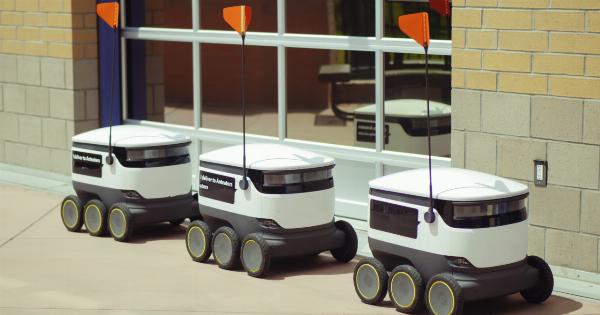Pathogenic obesity is a growing problem in modern society.
Due to unhealthy lifestyles, poor diets, and a lack of physical activity, more and more people are becoming obese and suffering from related health issues, such as diabetes, heart disease, and high blood pressure. However, technology is helping to fight this epidemic in the form of robotics. Robotic devices are being used in a variety of ways to help people with pathogenic obesity to lose weight and live healthier lives.
Here are some of the ways robotics is making a difference in this field:.
1. Robotic Exoskeletons
Exoskeletons are wearable robotic devices that can provide support and assistance to people with mobility disabilities. However, they can also be used to help obese individuals move around more easily and burn more calories.
By reducing the amount of effort needed to move, exoskeletons can make exercise more accessible and enjoyable for people who struggle with obesity. This can help them to lose weight, build muscle, and improve their overall health.
2. Robotic Surgery
In some cases, bariatric surgery (such as gastric bypass or sleeve gastrectomy) may be necessary to help people with pathogenic obesity to lose weight.
Robotic surgery can be used to perform these procedures with greater precision and less invasiveness than traditional surgery. With smaller incisions, less pain, and faster recovery times, patients can get back to their daily lives more quickly and with fewer complications.
3. Robotic Personal Trainers
Many people struggle to stay motivated when it comes to exercise, particularly if they are trying to do it alone.
Robotic personal trainers, such as the Peloton bike or the Mirror, can provide coaching, support, and even virtual classes to help individuals stay on track with their fitness goals. By making exercise more engaging and enjoyable, robotic personal trainers can help people with pathogenic obesity to stick with their routines and see better results.
4. Robotic Rehabilitation
For individuals who have suffered injuries or disabilities due to obesity-related health issues, rehabilitation is often necessary to regain mobility and functionality.
Robotic devices, such as the Lokomat or the ReStore, can provide targeted therapy and support to help patients recover more quickly and effectively. By helping people to regain their independence and strength, robotic rehabilitation can improve their quality of life and reduce the risk of further health complications.
5. Robotic Meal Prep
For some people with pathogenic obesity, eating a healthy diet is a challenge due to their busy schedules, lack of cooking skills, or other barriers.
Robotic meal prep devices, such as the EatWave vending machine or the Beehex pizza printer, can provide healthy and convenient food options that meet individual dietary needs. By making healthy eating more accessible and easy, robotic meal prep can help people to maintain a balanced diet and improve their overall health.
6. Robotic Monitoring
To achieve and maintain weight loss goals, it is important for individuals with pathogenic obesity to monitor their progress and adjust their habits accordingly.
Robotic monitoring devices, such as the Withings body scale or the Fitbit activity tracker, can provide real-time data on weight, exercise, sleep, and other important health indicators. By helping people to stay accountable and track their progress, robotic monitoring can motivate individuals to stay on track and achieve their goals.
7. Robotic Therapy
For individuals with pathogenic obesity who struggle with underlying emotional or psychological issues, therapy can be helpful to address the root causes of their behavior and support their weight loss efforts.
Robotic therapy devices, such as the Woebot chatbot or the ElliQ social robot, can provide virtual counseling and emotional support to individuals in the comfort of their own homes. By making therapy more accessible and less stigmatized, robotic therapy can help individuals to address their mental health needs and improve their overall well-being.
8. Robotic Fitness Equipment
In addition to personal trainers, robotic fitness equipment can provide a variety of workout options that cater to individual preferences and skill levels.
Robotic fitness equipment, such as the JaxJox kettlebell or the Tonal strength machine, use artificial intelligence and other advanced technologies to provide personalized coaching and feedback. By adapting to each user’s needs and abilities, robotic fitness equipment can make exercise more effective and enjoyable for individuals with pathogenic obesity.
9. Robotic Weight Loss Programs
Similar to personal trainers and meal prep devices, robotic weight loss programs can provide a comprehensive approach to weight loss that incorporates a variety of tools and resources.
Robotic weight loss programs, such as the Noom app or the Lumen metabolic tracking device, use data analysis and behavioral science to help individuals make sustainable lifestyle changes. By providing personalized guidance and support, robotic weight loss programs can help individuals with pathogenic obesity to achieve long-term weight loss and improve their overall health.
10. Robotic Research and Development
Finally, robotics is playing a crucial role in advancing our understanding of pathogenic obesity and developing new solutions to address it.
Researchers are using robotics to study the biology of obesity, test new treatments and interventions, and develop new robotic devices that can better support individuals with this condition. By leveraging the power of technology, robotics is helping to push the boundaries of what is possible in the fight against pathogenic obesity.
Conclusion
As the prevalence of pathogenic obesity continues to rise, robotics is providing a range of innovative solutions to help individuals lose weight, improve their health, and lead fuller lives.
From exoskeletons and robotic surgery to personal trainers and meal prep devices, robotics is transforming the way we approach obesity treatment and prevention. While there is still much to be done to address this complex issue, robotics is a promising tool that has the potential to make a significant impact.




























